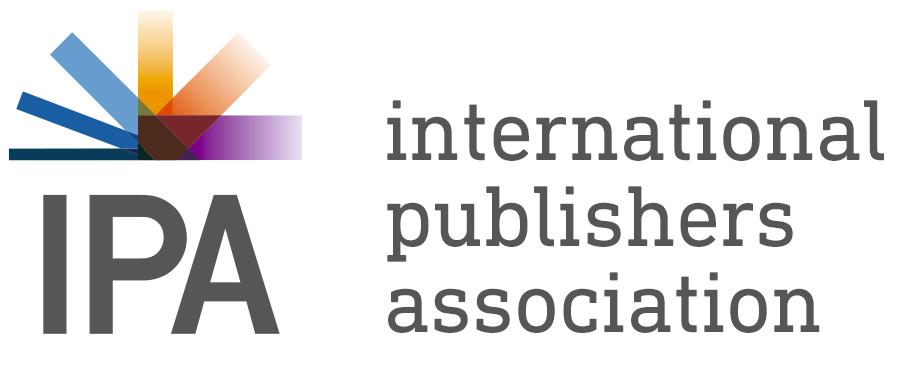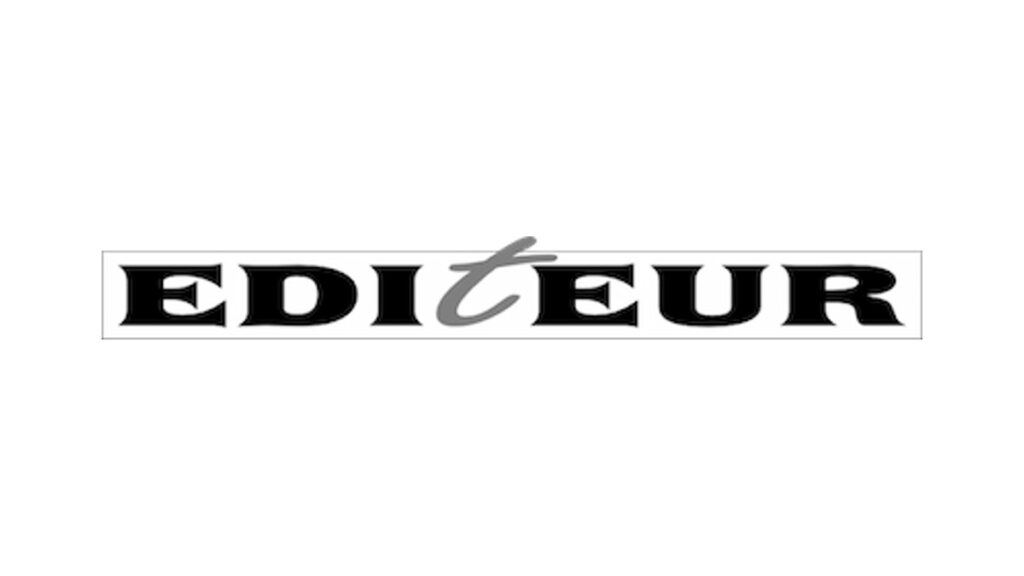Recap:
Metadata management is an important aspect of publishing. It’s the key information about a publisher’s products that needs to be shared with the remainder of the supply chain – from the basic title, author, ISBN, cover image, publication date and price, to richer information like abstracts or summaries, author bios, open access licenses and details of distribution arrangements. Metadata is often communicated via ONIX, a standard data file format that publishers, retailers, libraries and various intermediaries use, across many countries. It encompasses bibliographic information about the book itself, but also the vital marketing collateral and commercial arrangements. If you’re unfamiliar with ONIX, there’s a 15-minute briefing video available at https://tinyurl.com/3eyy3a9f.
EDItEUR is a member-supported independent trade association and standards body that’s best known for developing, supporting and promoting the ONIX and Thema standards, ensuring our ‘metadata supply chain’ remains based on free-to-use, open standards. The latest versions of its standards specifications can be found on the EDItEUR website https://www.editeur.org/.
The ONIX ecosystem took an important step forward in March.
In this series, Graham Bell, Executive Director of EDItEUR, shares occasional updates on EDItEUR’s work and the standards it manages.
‘EUDR’. The merest mention shuts down any other topic of conversation. It dominates discourse at conferences. And it intimidates small publishers and independent bookstores. But is it really as scary as it seems? We can all get behind the aims of the EU’s Deforestation Regulation – reducing the environmental damage of deforestation, forest degradation and consequent loss of biodiversity. But how will these aims translate into rea-world actions and workflows?
To accomplish its aim, the EU will exclude from its market seven commodities like wood, coffee or palm oil, plus the products derived from them, where cultivation is associated with the loss of natural forest. But inevitably, the methods of tracking commodities as they flow through the supply chain can get complex.
It should be noted first that EUDR applies to products sold in the EU, and to products exported from the EU. The emphasis of the Regulation is on traceability and diligent record keeping by all parties in the supply chain. It requires that manufacturers and resellers of the listed commodities, and of the goods derived from them, ensure that the raw materials are not sourced from areas subject to deforestation, that they keep detailed records, and that they conduct an assessment of the risk that the data supplied to them is incorrect.
The oversight and enforcement process for EUDR builds on that already used for trading of animals and foodstuffs, and requires that provenance records for the commodities used to manufacture a product are uploaded to an EU online portal, TRACES NT (henceforth, just Traces). Provenances require GPS coordinates and other data for the plots of land from which the timber used to make paper, card and board was harvested, and a legal declaration that the raw materials are ‘deforestation-free’ and harvested in accordance with applicable local law. The portal records a Due Diligence Statement (DDS), with a reference number. Withoutthat reference, the product is excluded from the EU market (and excluded from being exported from the EU).
In the book supply chain, this traceability of raw materials – which applies to timber, and in turn to pulp, paper and books – requires a seamless flow of trusted information from forestry companies to paper and board manufacturers, then onwards to printers, to publishers, and to resellers (including retailers). The focus is on the party that places the goods on the EU market, but compliance is required throughout the entire supply chain, and for all the raw materials used in the product.
Responsibility will fall upon publishers within the EU to register DDSs for their product. For publishers outside the EU, responsibility will pass to their local affiliates, sales agents (publisher representatives in ONIX terms), distributors and importers who are responsible for placing the product on the EU market. However, those publishers outside the EU cannot avoid the process entirely, as they will still have to supply the data required for DDS registration to those other parties. And publishers and others must maintain their records so that claims about their due diligence process, provenance of raw materials, production dates, legal compliance etccan be substantiated.
EDItEUR has over the past year released a number of incremental updates for the controlled vocabulary within its ONIX standard that enable ONIX to be used to implement part of that flow of information, at least from publishers and distributors to downstream business partners. (Of course, upstream suppliers generally don’t use ONIX, so ONIX forms only part of a solution, and other methods will be needed in parts of the supply chain involving pulp suppliers, paper manufacturers and possibly printers). So for example, if a particular product is manufactured entirely from EUDR-compliant timber and paper, and has a DDS reference number, that can be stated in the ONIX like this:
<ProductFormFeature>
<ProductFormFeatureType>50</ProductFormFeatureType> <!– product DDS –>
<ProductFormFeatureValue>24FRXVV3VOS991+0123456789</ProductFormFeatureValue>
<!– DDS reference + verification number –>
</ProductFormFeature>
Only EU-based organizations can create Due diligence statements. If the product does not yet have a DDS, then a non-EU publisher will need to pass on the ‘ingredients’ needed to create one to an in-EU trading partner such as a sales agent or importer. Those ingredients can also be delivered in ONIX, alongside all the other key attributes of the product.
The ingredients might in many cases consist of a list of DDSs for the various types of paper, card and board used to manufacture the book – a reel of paper is a product, just as is a book, so the paper may well have a DDS of its own, and that DDS can be used to create the DDS for the book:
<ProductFormFeature>
<ProductFormFeatureType>51</ProductFormFeatureType><!– associated DDS(s) –>
<ProductFormFeatureValue>25SEWBW6BMT874+0123456789
25FIGRB31LV129+0123456789</ProductFormFeatureValue> <!– DDS references
+ verification numbers (without any spaces),
with each separate reference space-separated –>
</ProductFormFeature>
And in other cases, the provenance of the wood used to manufacture the paper might be required:
<ProductFormFeature>
<ProductFormFeatureType>47</ProductFormFeatureType> <!– provenance –>
<ProductFormFeatureValue>NO Picea abies (Norway Spruce) 202411
</ProductFormFeatureValue> <!– country + tree species + harvest date –>
<ProductFormFeatureDescription>48.558981 -58.578193, 48.563800
-58.568827</ProductFormFeatureDescription> <!– GPS data –>
</ProductFormFeature> <!– for forest –>
Information like the above will be required when an importer or another organization creates a DDS.
In a different case, you may need to outline why a particular product is exempted from the need to have a DDS:
<ProductClassification>
<ProductClassificationType>05</ProductClassificationType> <!– TARIC –>
<ProductClassificationCode>4901990000</ProductClassificationCode>
</ProductClassification>
<ProductClassification>
<ProductClassificationType>20</ProductClassificationType> <!– Additional –>
<ProductClassificationCode>Y133</ProductClassificationCode> <!– TARIC –>
</ProductClassification>
The TARIC code above specifies that the product is a book, but the additional code Y133 specifies that it is outside the scope of EUDR because it is manufactured using 100% recycled paper and board.
–––––––––––––––––––––––––––––––––––––––––––––––––––––––––––––––––––––––––––
EDItEUR has recently published an application note providing considerably more detail about compliance, a range of frequently asked questions, and how ONIX can streamline the communication of the required data. The application note is available at https://www.editeur.org/files/ONIX%203/APPNOTE%20EU%20Deforestation%20Regulation%20and%20ONIX.pdfor https://tinyurl.com/j29cczw4. EDItEUR’s complete list of ONIX application notes is at https://www.editeur.org/93/Release-3.0-and-3.1-Downloads/#HowTo or https://tinyurl.com/edkfme46.
–––––––––––––––––––––––––––––––––––––––––––––––––––––––––––––––––––––––––––
Now, the EUDR compliance regime is complex, so it’s important that each organization within the book supply chain – European-based and those outside Europe but wishing to sell books into Europe – consults a legal adviser. (EDItEUR cannot give legal advice, nor may any part of its EUDR documentation be construed as such.) But there are some common questions that are posed to EDItEUR.
Two particular questions stand out.
First, does the implementation date for EUDR mean that books published before that date are exempted? It does not. The critical dates are when the raw materials were harvested, and when the copies of the book were manufactured or entered the EU. Some publishers are understandable uncertainty over this, as the EU’s Regulation uses phrases like ‘make the product available before a certain date’. Publishers are used to interpreting ‘the product’ as ‘the ISBN’ and ‘making it available’ as the date of publication. However, the Regulation considers ‘products’ to be individual copies, so the date of publication is not the correct criterion. So for a book published many years ago, reprints imported into the EU after the implementation date must be compliant. However, there are transitional arrangements for ‘old stock’ entering the EU market.
Second, when does it come into force? In a technical sense, it passed into law in mid-2023, with implementation and enforcement set for the end of 2024. Small and micro- enterprises were granted an extra six months. The original 2024 deadline was delayed by 12 months, so currently, the key date is 30th December 2025 (or mid-2026 for small and micro-enterprises). Today’s (23rd Sept) news of another possible delay raises the spectre of another three months of uncertainty just as publishers around the world are finalising their compliance arrangements.
There will be a panel discussion on EUDR at EDItEUR’s International Supply Chain Seminar at Frankfurt Book Fair – details here.

